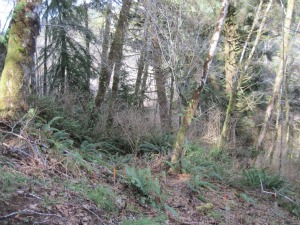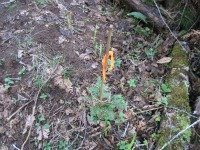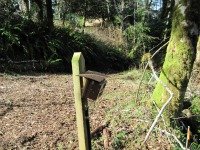Wildlife Protection
for your Forest, Deer Nuisance Tips on how to Protect your Seedlings

Wildlife protection for your forest from the deer nuisance is a very important issue if you want your seedlings to be able to grow into a mature tree.
I offer some tips that you can use to protect your seedlings from this damage.
The deer like to feast on your forest that you went to all of the trouble and expense to make on your country acreage as you turned it into a forestry garden.
I realize that the deer have a right to the areas that they are accustomed to grazing in.
Why does it have to be my garden is the question?
It almost seems to me that the deer in my neighborhood watch and wait until I plant something and then follow along behind me destroying all of my work.
Deer aren't really lazy, but they will take advantage of what is offered if it its easier to get.
When you plant your young tender seedlings that are spaced and all of the other vegetation cleared out they seem to think that I have just set the table for them.
There are certain species of seedlings that they treat as if it is candy.
It will be worth your time and effort to research this out before choosing the species that you plant.
If you go ahead and plant the ones that they especially enjoy you should count on loosing a certain percentage to the deer.
Deer protection methods
- Dog
- Mechanical means
- Chemicals
- Electronic means
One wildlife protection method that is quite effective is with a dog.
A larger breed works best.
You need one that is more bark than bite.
You do not want to have a deer killer dog.
This is not only a bad idea as far as the wildlife is concerned, but it is illegal.
So if you choose to go this route do some research as to what breed will work best for you.
Of course with a dog there is the normal maintenance that is required to perform for the dog.
Also dogs do have a tendency to get into things that they shouldn't.
Porcupines and skunks are just a couple.
So this needs to be considered.

There are the mechanical means to discourage the deer nuisance on your seedlings.
There is the tree protectors that the seedling is planted in.
This does work for the ones that are small, but as they get larger they grow out of the sleeve and then the deer can get to them.
One advantage to a sleeve of this sort is that they are bio-degradable.
This means that you do not have to bother with coming back and removing them later on.
I have used these with fairly good results.
They work especially well on the very small seedlings that you will sometimes get with certain species.
These small ones need all the help they can get.
This will quite often make the difference between their survival or death.
There are the chemicals on the market that are advertised to work wonders as wildlife protection for your plants.
I have tried a number of these and have had limited results.
Some work more or less while others do not work at all.
I can almost hear the deer laughing at me as they munch away on my plants destroying them and wasting all of my time and money.
I have found one that seems to work better than the rest.
This is the one used by the commercial growers so I felt it was worth a try.
Plant SKYDD is the name of the chemical deer repellant that I use today.
The only big drawback I have with it is:
You must apply it while the plant is dry and the chemical needs to dry before the next moisture.
For certain areas this does take some watching the weather channel and hoping that they got it correct.
I used this to protect an area where I have planted about 400 cedar seedlings, that is candy to the deer, and when spraying I overlooked a couple.
When I went back later to check on them I noticed that the only ones the deer chewed on were the ones I didn't spray.
This tells me that this stuff does work.
But it must be applied as directed on the instructions and more than once a year.

Another method of wildlife protection that I have put in use is the electronic deer repellant.
This is a device that when the beam is interrupted by something crossing in its path there is a high pitched sound produced.
This is supposed to discourage the wildlife from staying in the coverage area.
I have used these with limited results.
The deer do not like the sound but they more or less get to where they will put
up with it to a certain extent.
It does keep them from hanging out in my repro area though.
They normally will just travel through and keep on going.
As you are faced with the nuisance of wildlife protection the above mentioned means are some that you may try to protect your seedlings and repro from the browsing.
When the deer browse on your young trees they may not kill them but will put their growth back.
This will increase the amount of time it will take before you have a valuable forestry crop.
From wildlife protection to reforesting
From wildlife protection to forestry gardening tips
Click here to read our privacy policy: Privacy Policy





